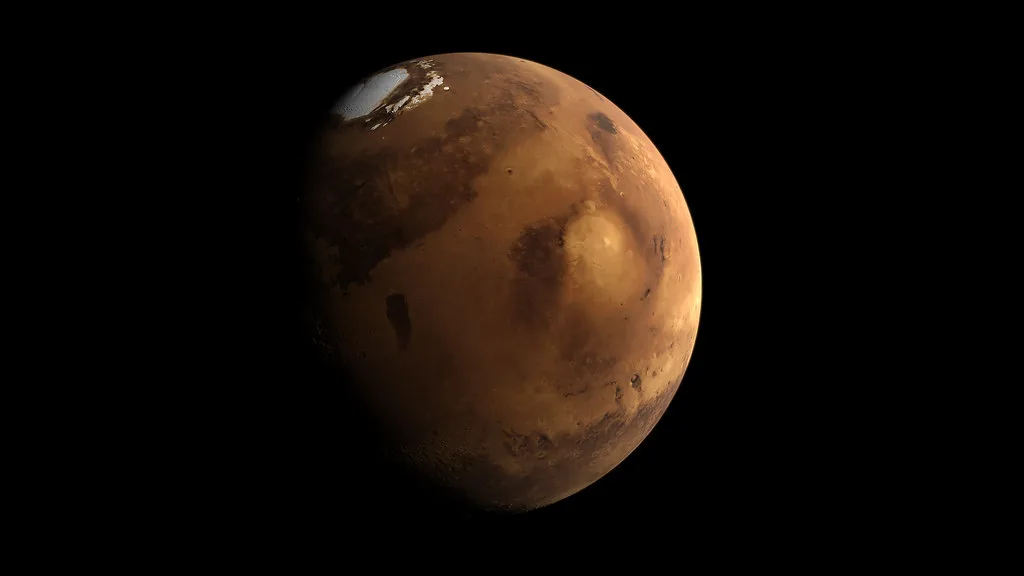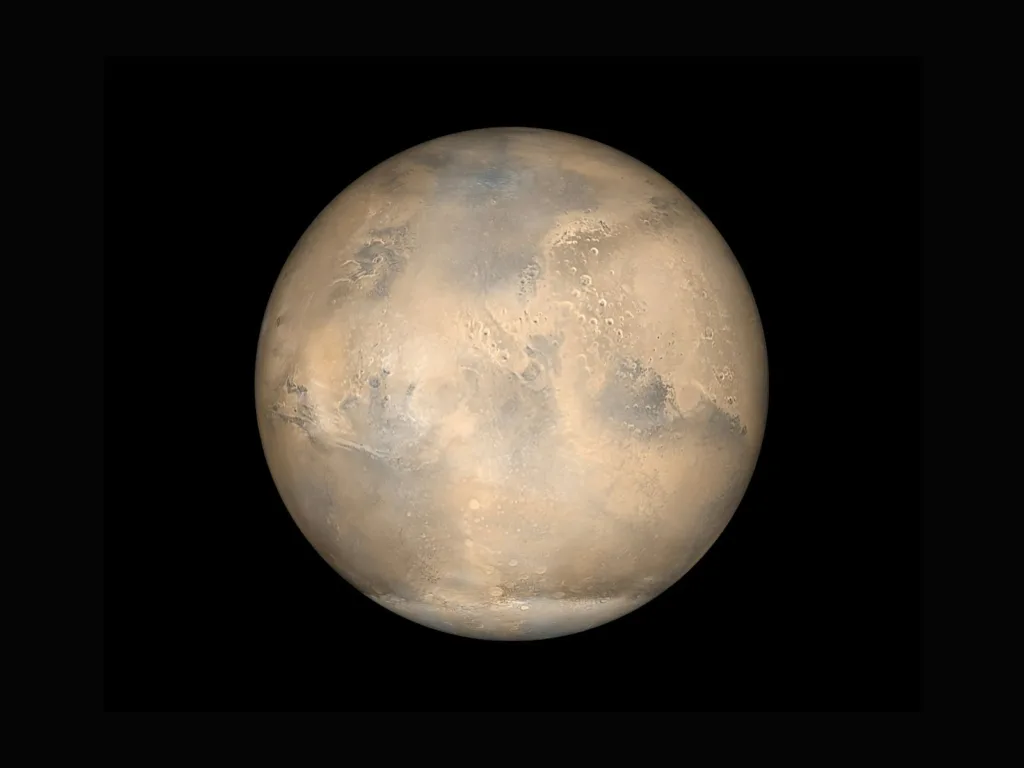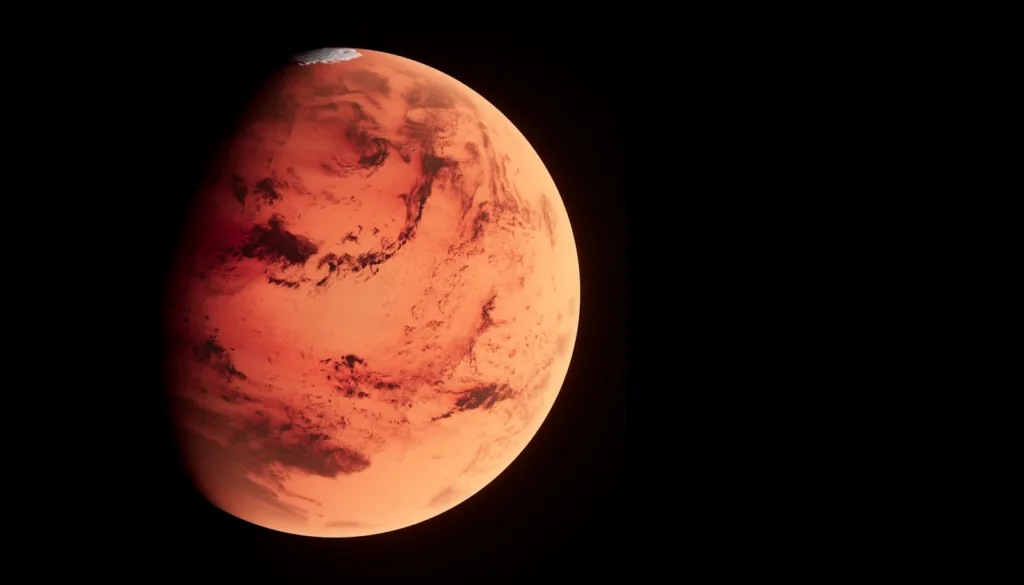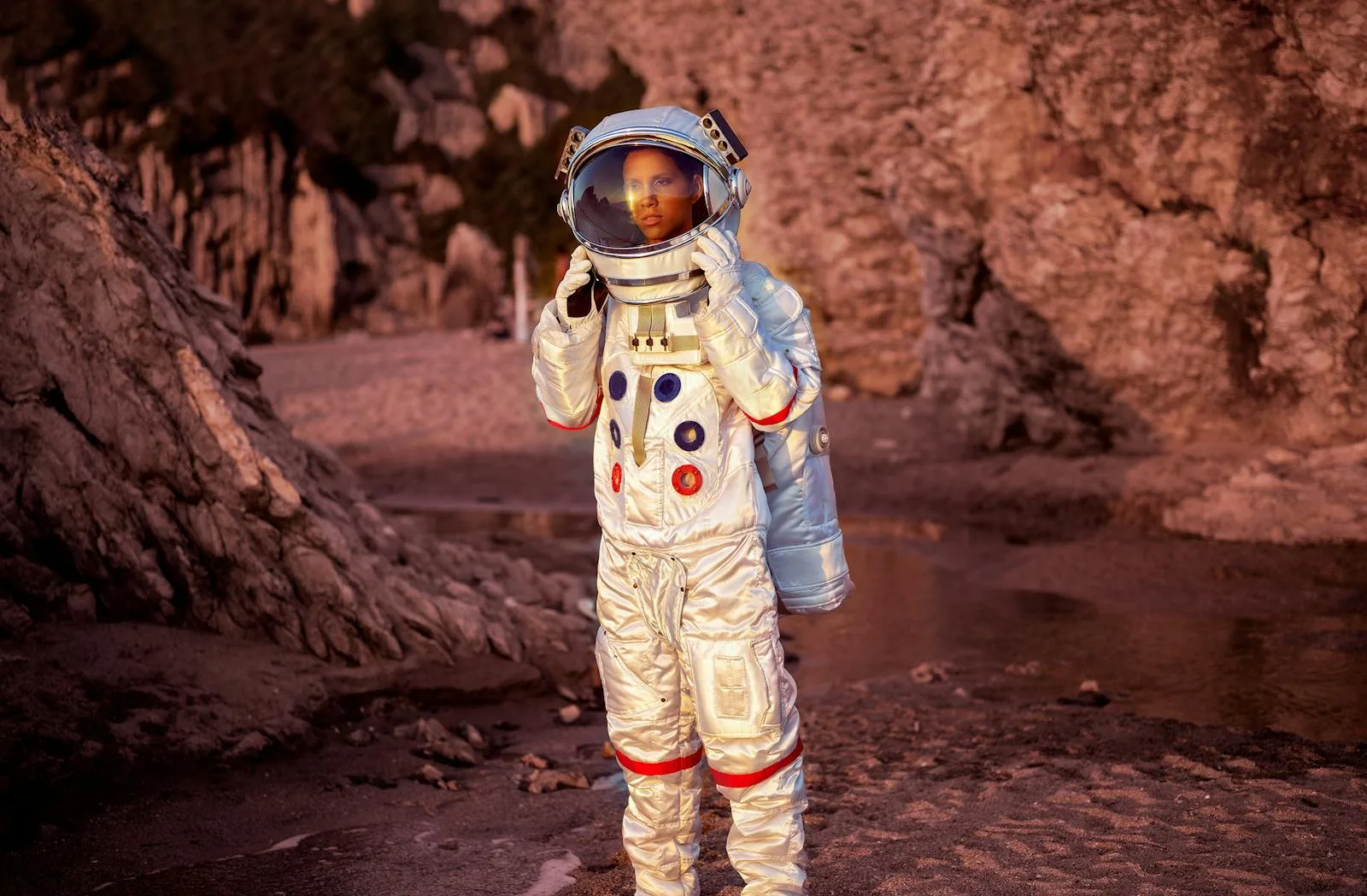NASA said earlier this month that it would be providing money for a ground-breaking high-thrust rocket known as a Pulsed Plasma Rocket, which may enable crewed journeys to Mars in as little as two months.
Table of Contents
- Although much has changed in our understanding of the planet, humans have long fantasized life on Mars.
- Early US plans had the assumption that people could travel to the Red Planet by the 1980s.
- Over time, the country’s aspirations for crewed flights have been impeded by issues related to money and technology.
According to Howe Industries, which is developing the concept, it would significantly lower the danger and cost of a crewed Mars mission and take seven months less time than it would with existing technology. NASA released a statement stating that it “holds the potential to revolutionize space exploration.”
The PPR is merely one of the most recent advancements in the US’s long-running debate about sending people to Mars. For instance, spacecraft propelled by nuclear bombs were suggested for the journey in the early 1960s.

The US has invested time and money in plans for a crewed Mars trip since even before NASA successfully landed the first humans on the moon, but its efforts have never succeeded beyond the ground. But there are other obstacles besides technology. Politics is also very important.
According to curator Matthew Shindell of the National Air and Space Museum, “that’s kind of like a joke within the space community or the Mars community,” as reported by Business Insider. “Putting humans on Mars is always 20 years away.”
He claimed that it was both brief enough to appear real and lengthy enough for the political climate to shift before it could be implemented.
Although much has changed in our understanding of the planet, humans have long fantasized life on Mars.
Early US plans had the assumption that people could travel to the Red Planet by the 1980s.
Over time, the country’s aspirations for crewed flights have been impeded by issues related to money and technology.
America is unable to send people to Mars

1950s: The Mars Project
Nobody truly knew what they might find on Mars in the 1940s and 1950s, but they knew it would be difficult to get there. Wernher von Braun was among those who approached the issue head-on first.
As a Nazi party member during World War II, von Braun developed the V-2 missile. He worked on missiles with the US Army after the war as part of Operation Paperclip, and he also wrote a book titled “The Mars Project.” In it, he outlined the first comprehensive strategy for relocating mankind to Mars.
With 10 spaceships and 70 crew members, he envisioned a 260-day voyage that would launch in 1985. “He sat down and did the math and created a whole story around it,” Shindell said.
When von Braun joined NASA a few years later, what had begun as fiction became more plausible. In the late 1950s, he provided advice on NASA’s initial 10-year plan, which included the first probes to be sent to Mars (people would follow).
1960s: Mars by 1965
Theodore Taylor, a Los Alamos nuclear weapons expert, and Freeman Dyson, a theoretical physicist, started an ambitious project in the late 1950s to construct a spacecraft propelled by nuclear explosions.
The resulting ship, known as Project Orion, would require 12 years to build, cost $100 million annually, and have room for 150 passengers. “Mars by 1965, Saturn by 1970” was their motto.
However, NASA was worried about what might happen if any of the hundreds of bombs needed to power the rocket blew up.
The group was having problems obtaining more money by 1963. The Limited Test Ban Treaty was ratified in that same year, which made it more difficult for the team to test their vehicle.
One year later, the project was abandoned.
1965: The first close-up of Mars
Despite its intense focus on the moon in the 1960s, NASA did not completely give up on its Mars goals.
A proposal to send five crewed spacecraft to the Red Planet by the early 1980s was being undertaken by German rocket scientist Ernst Stuhlinger at NASA in 1962.
The ships Stuhlinger had in mind were enormous—nearly 500 feet long. NASA’s Space Shuttles, in contrast, are less than 200 feet. However, NASA turned its attention to lighter, more compact spacecraft as it rushed to set foot on the moon. Although this accelerated the process towards the moon, Mars took a step backward as a result.
In “Humans to Mars: Fifty Years of Mission Planning, 1950-2000,” David S. F. Portree stated that this change in direction “reduced Apollo’s utility as a technological stepping stone to Mars.”
Before sending humans to Mars, NASA realized it needed to learn more about the planet. Thus, Mariner 4 was the first spacecraft to fly past Mars, launched by NASA’s Jet Propulsion Laboratory in 1964.
The blurry pictures the probe sent back to Earth depicted a lonely, empty planet. However, they were the first up-close photos of the Martian surface that any Earthling had ever seen.
1970s: The plans following Apollo
As part of its Apollo Program, NASA had just successfully landed the first humans on the moon in 1969 and was prepared for the next major endeavour. A Space Task Group headed by President Richard Nixon published a report in support of human trips to Mars in 1982 the same year.
However, Nixon disregarded the majority of the 1969 report’s recommendations in favor of the Space Shuttle program, which did not include a trip to Mars. For NASA, it was a pivotal moment.
NASA did not have to compete for money during the height of the Apollo era, according to Shindell. Nixon’s administration began to reduce spending at this point.
Many Americans wanted the government to concentrate on domestic issues like poverty and the environment during the Vietnam War.
“If you’re a proponent of human Mars exploration, this is the problem you’ve faced ever since the 1970s,” Shindell stated. Considering that the moon is much closer than Mars, sending people there was already very costly.

1980s: The report by Sally Ride
The National Commission on Space was established in 1985 by President Ronald Reagan to plan space exploration for the next 50 years, including the potential for piloted vehicles to reach Mars.
However, the Space Shuttle Challenger of NASA detonated. The mishap changed the agency’s perspective on space flight for humans in general.
“In general, there was a great deal of soul-searching within NASA about the use of expensive and risky human-rated launch vehicles like the shuttle,” Jim Bell and William Sheehan wrote in “Discovering Mars: A History of Observation and Exploration of the Red Planet.”
However, the administrator of NASA assigned astronaut Sally Ride the duty of outlining the organization’s upcoming space missions just a year later. She outlined the requirements for the US to land an astronaut on Mars by the year 2005 in her report.
NASA would have to increase its existing budget in the next ten years in order to reach that deadline. That was not the case.
1989: Twenty Years to Mars
In 1989, George H.W. Bush, the newly elected president, stated in a speech that a crewed trip to Mars appeared to be back on the table.
He asked, “Why Mars?” Because striving, seeking, and finding are part of humanity’s destiny. In addition, America’s destiny is to lead.”
NASA’s answer was the Space Exploration Initiative, a $400 billion to $500 billion study of Bush’s space exploration objectives.
Mars was still a long distance off at that point. It was anticipated that the missions will start after 2010.
However, Sheehan and Bell said that Bush’s Martian mission failed a few years later in 1993 due to a lack of political will and congressional finance.
“Better, faster, cheaper” was the slogan of the 1990s.
Mars enthusiasts dreamed of landing humans on the planet before the end of the millennium by the 1990s. The Mars Society was founded by aerospace engineer Robert Zubrin to advocate for the exploration of the planet and the ultimate establishment of a human settlement there.
In the meantime, NASA was attempting to determine how best to investigate Mars following the 1993 loss of communication with the robotic probe Mars Observer. Unmanned missions remained the main focus because there is still so much to learn about the planet.
Daniel Goldin, the agency’s new administrator, was aiming to make robotic missions “better, faster, cheaper.”
The unmanned Pathfinder and Mars Global Surveyor missions were successful this decade. Sojourner, the first Mars rover in operation, was delivered by Pathfinder, and amazing photos and data were returned by MGS from the planet.
However, two additional unmanned spacecraft, the Mars Polar Lander and the Mars Climate Orbiter, were lost by NASA in a few years.
2000s: The moon first, though
NASA achieved success with the rovers Spirit and Opportunity in 2004 despite the failures of the Polar Lander and MCO.
NASA’s rovers appeared to rekindle some of the enthusiasm for sending humans to Mars, despite the agency having recently experienced another tragedy with the loss of the Space Shuttle Columbia and its crew in 2003.
President George W. Bush unveiled the Constellation Program in 2004, 15 years after his father’s space speech. The ultimate objective of the plan was to land humans on Mars, although no specific date was specified for this endeavour.
Bush’s plan included for going back to the moon before visiting the Red Planet. President Barack Obama announced the cancellation of Constellation in 2010, but he also established a deadline of the 2030s for sending humans to Mars.
2010s: Mars begins to sell products
Private space businesses, including SpaceX, began developing plans to send personnel to Mars in the 2010s.
Elon Musk, the founder of SpaceX, said in 2016 that humans would be there in less than ten years. Later on, he changed the date to 2029, assuming strong colonization by 2050.
Nothing has been sent to Mars by SpaceX thus far.
Meanwhile, space exploration ambitions from the Obama administration were reversed by President Donald Trump. Once more, NASA had the moon as its main priority.
NASA’s most recent and ongoing program for crewed deep-space exploration is the Artemis Program, which was launched in 2017 during the Trump Administration. Its objectives are to put people back on the moon and build a space station there where they can stay for several weeks or months at a time.
However, this plan to prioritize the moon does not totally rule out Mars. According to NASA’s Mars Campaign Office Chief Dayna Ise, it would actually facilitate our landing on the Red Planet.
“You learn a lot by going to the moon, but you learn even more by staying at the moon,” she stated. “And so whatever we learn there will help with Mars.”
She added that there was a potential for private space enterprises. “Everyone is on deck,” she declared. “It is such a difficult engineering problem that we cannot exclude anybody from helping.”
2020s: Mars life simulation
This decade has been a busy one for private space firms. After multiple disastrous attempts, SpaceX successfully launched Starship for the first time this year. Musk intends to use the mega-rocket in a big way to inhabit Mars.
Meanwhile, the Biden administration has kept up its backing for the Artemis lunar missions. However, there have been a few obstacles.
NASA recently announced that it would be delaying the first crewed Artemis mission to the moon until 2025, citing safety and technical concerns.
NASA’s mission Artemis IV, which aims to transport a portion of a lunar space station to the moon, is still slated to launch in 2028.
A prolonged stay on the moon, according to Ise, would enable researchers to gain greater insight into the conditions necessary for personnel to endure more than a few days away from home.
The organization is also researching the effects of solitude on people. Participants in NASA’s CHAPEA missions spend a year in a mock Mars habitat. The “analog astronauts” are closely watched, adhere to rigid routines, and have little contact with their loved ones. On July 6, the first crew of the year is expected to exit the habitat.
Beyond the 2030s: Getting People to Mars
NASA understands that Mars has unique obstacles that the lunar surface cannot prepare for, despite its moon-first objective. The trip is anticipated to cause communication delays of at least 20 minutes between the crew and Earth, in addition to taking a significant amount of time and fuel to get there.
According to Ise, the travelers would have to be capable of handling their own medical emergencies and troubleshooting hardware problems. However, NASA is also attempting to increase the autonomy of a few systems. “If there is an issue, they don’t have time to troubleshoot with someone on the ground to fix their life support system,” she stated. “So we need those life support systems to be smarter.”
Developing a food supply, managing the planet’s skin-irritating dust, and protecting the crew from radiation are other issues. “We have to build an ecology inside a transit vehicle to keep everyone alive and healthy,” Ise stated.
That will all require time. Bill Nelson, the administrator of NASA, has stated that human habitation on Mars may be possible by 2040. It’s like eating an entire elephant, Ise said. “We’re doing it one bite at a time and building on everything that we learn,” she continued.
Whether US private firms will reach Mars first is still up in the air.
read also : Why There Have Been No Shots at the F-15 Eagle
Why the US can’t send humans to Mars (msn.com)
America is unable to send people to Mars America is unable to send people to Mars America is unable to send people to Mars America is unable to send people to Mars America is unable to send people to Mars America is unable to send people to Mars America is unable to send people to Mars America is unable to send people to Mars America is unable to send people to Mars America is unable to send people to Mars America is unable to send people to Mars
America is unable to send people to Mars America is unable to send people to Mars America is unable to send people to Mars America is unable to send people to Mars America is unable to send people to Mars America is unable to send people to Mars America is unable to send people to Mars America is unable to send people to Mars America is unable to send people to Mars America is unable to send people to Mars America is unable to send people to Mars America is unable to send people to Mars
America is unable to send people to Mars America is unable to send people to Mars

